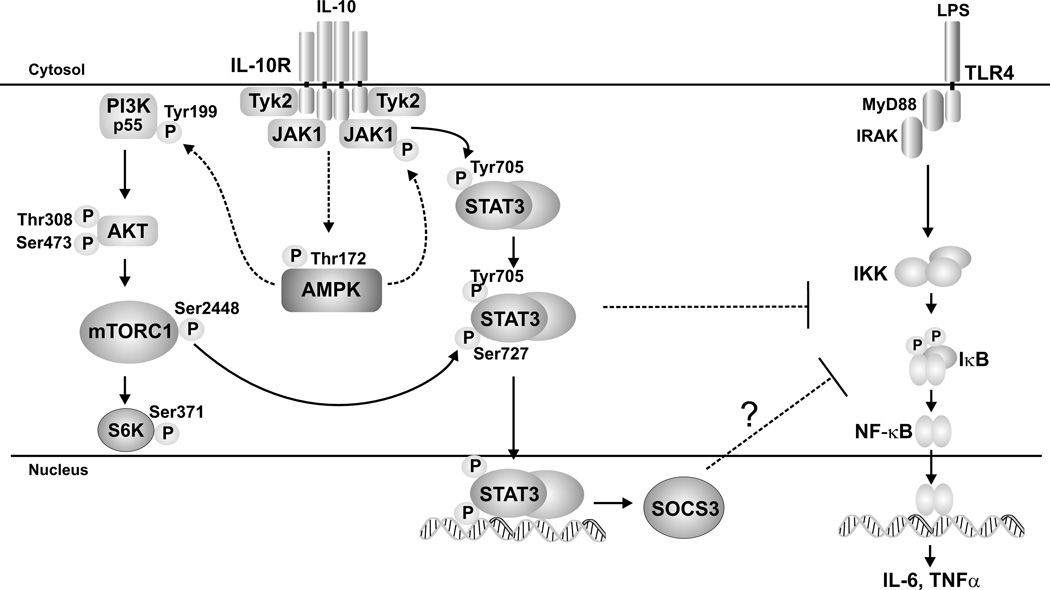Figure 7.
AMPK activation promotes the anti-inflammatory properties of IL-10 through bifurcated activation of the Akt/mTORC1 and JAK/STAT signaling pathways. IL-10 signaling promotes the rapid phosphorylation of JAK1 in an AMPK-dependent manner. AMPK’s influence on JAK1 phosphorylation is indirect, as indicated by the dotted line. Activation of JAK1 subsequently leads to the phosphorylation and activation of STAT3 (Tyr 705), which positively regulates STAT3 (Ser727) phosphorylation and is critical for SOCS3 production. In addition to its role in JAK/STAT signaling, AMPK also simultaneously promotes the activation of PI3K by enhancing the phosphorylation of the p55 subunit (indirectly, as indicated by the dotted line). Phosphorylation/ activation of Akt follows leading to an increase in mTORC1 activity, reflected by an increase in S6K phosphorylation (Ser371). Activation of mTORC1 leads to an increase in phosphorylation of STAT3 (Ser727), which further enhances STAT3 transcriptional activity leading to SOCS3 gene expression. STAT3-regulated genes, possibly including SOCS3, in turn, suppresses TLR-activated inflammatory cytokine production.

